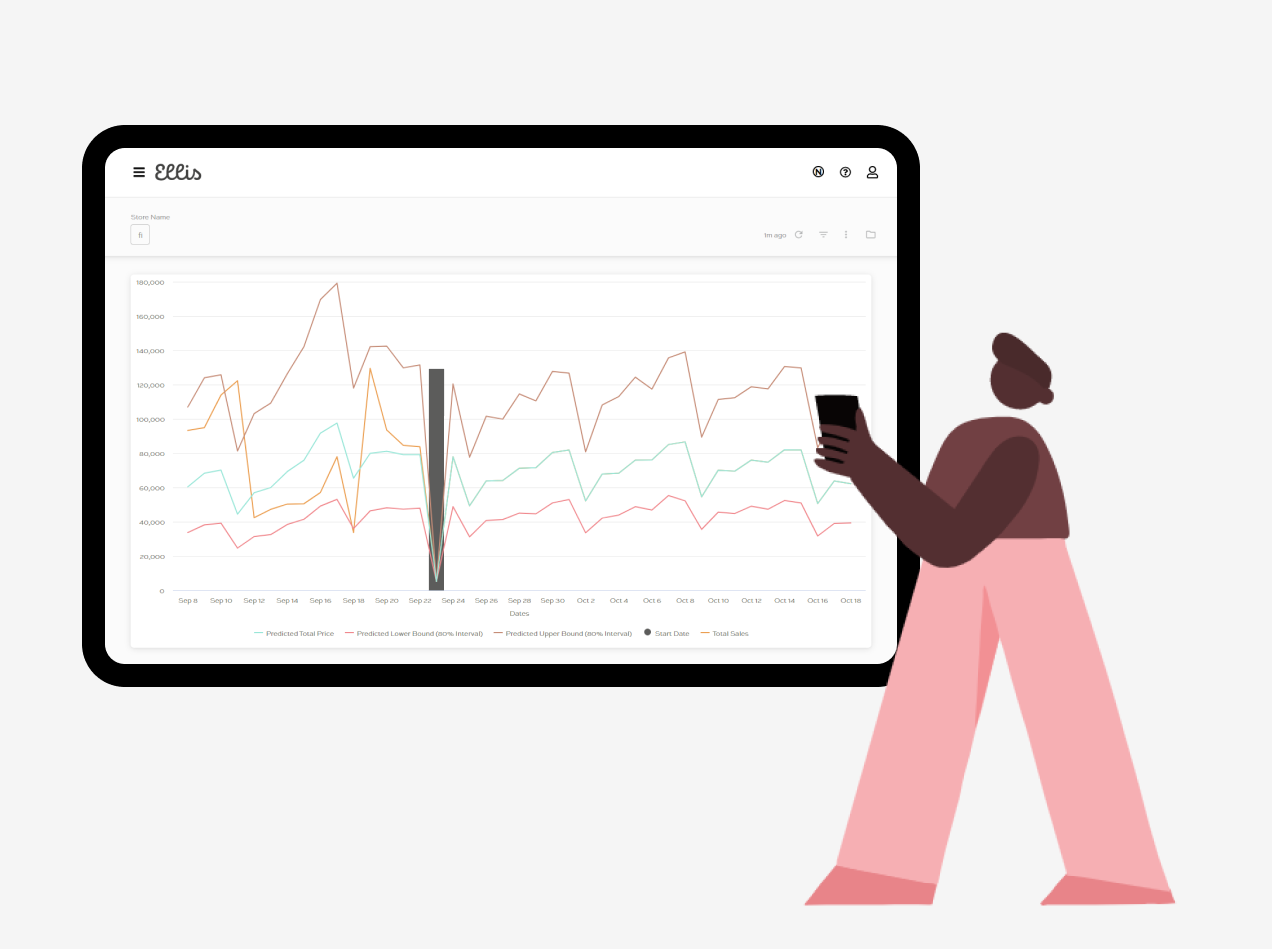Data-management platform Ellis is supporting Shopify’s omnichannel retail offering. This means that one can measure sales which occur in online stores and also point-of-sales operations, if they are running on Shopify’s POS-system. Shopify has enabled the possibility to follow sales and customer related activities in real-time.
Shopify POS is often used for two types of physical location operations. Traditionally D2C brands have used them for pop-up stores, where you can be mobile and even move to stores towards customer flows or sell goods at fairs, concerts or fashion shows. Second option is a permanent physical store location. If required even running multiple Shopify POS cash registers in a single store if the stores attract more customers.
Basics of connecting Shopify POS to Ellis
Before Shopify POS locations can be connected to Ellis it needs to make sure that these stores are linked to such Shopify accounts, which have already been added to Ellis. In case you have separate Shopify or Shopify Plus stores just to run your POS-operations, kindly inform this to your Ellis customer service manager, so they can also help to connect these stores.
Once these locations have been added to the POS view on Ellis, users can start analyzing this data from all connected POS locations. Kindly also inform your Ellis customer service manager if you want to add more POS locations or you are temporarily shutting down POS-locations, so that we can update the view accordingly. Ellis does currently support as many POS locations as wished, we have active customers running their operations with 50+ locations.
Important decisions before connecting Shopify POS
The first important decision is if a brand wishes to collect additional data from the POS locations. This means in a nutshell, if one wishes to recognize customers shopping also in the physical life. This is typically executed with loyalty programs such as Yotpo or Loyalty Lion.
Second important decision is to decide if the brand also wants to connect some additional first party data from the physical stores. There is a possibility to gather additional first party data with solutions such as a Grapevine, which is supported by Shopify POS, so you can ask paying customers key questions to gather useful information. You need to make sure this is implemented in the right way and the store personnel need to be trained to use such a solution.
Comparing data on Ellis, how to get started?
The easiest way to get started is to open a sub-dashboard behind sales called point of sales. This dashboard is created purely to analyze the sales efforts in Shopify POS locations. It will show you the very basics on the top such as the amount of orders and related sales. Below of this you can find a clear comparison graph to show you the amount of sales occurred in POS locations in comparison to your online store. Below there is a more detailed sales trend analysis graph. These graphs and tables offer you a clear picture of your physical store sales and your overall omnichannel performance.

To cater the need of more advanced omnichannel brands we have added a wide range of additional tables to help brands to see during which days there are typically sales spikes and at what time of the day sales mainly cumulate. These can be easily compared to previous time periods such as the previous month.

Finally there is a specific table, where you can follow in an up-to-date view the performance of sales personnel operating in these physical stores. If wished, more data points can be added here as an additional service to have that 360 degree performance analysis. Lastly there are few tables to more in depth analyze net sales and sales which are being divided to product level.
How to compare online and POS customers?
The other aspect is to analyze different audiences against each other. This can be easily done in the customer segmentation dashboard. This can be found under the customer dashboard. When creating a POS only segment, you just need to tick POS under “order source name”. This allows you to follow customers who have purchased from physical locations.
The chosen segment can then be compared as an example with customers who have only ordered online. This is very straightforward and can be done with order source selection. In case of a more accurate segmentation you can also try to use customer tags, which are commonly used with different types of VIP customers or loyal customers, this depends on the setup on Shopify. For further information kindly ask your customer service manager.
Need help unifying your data in your POS stores and Shopify stores? We got you covered. Request a demo.

